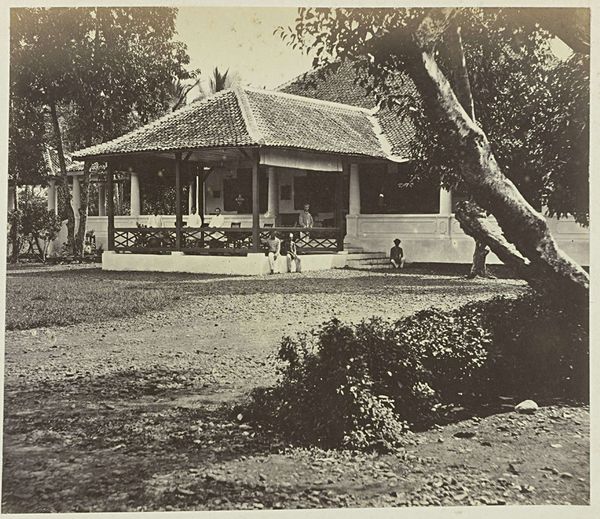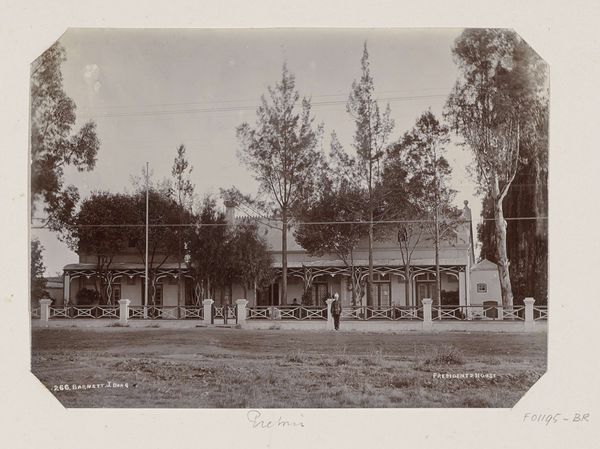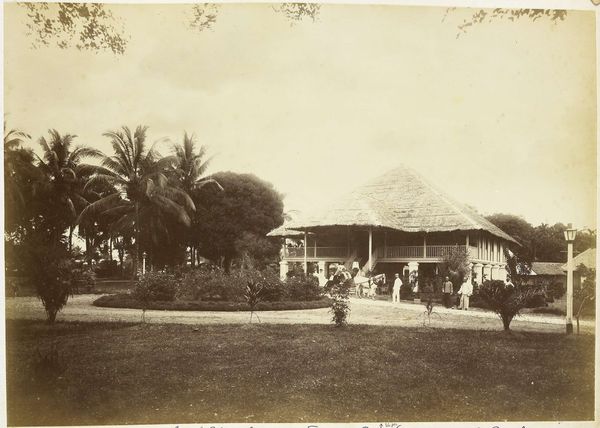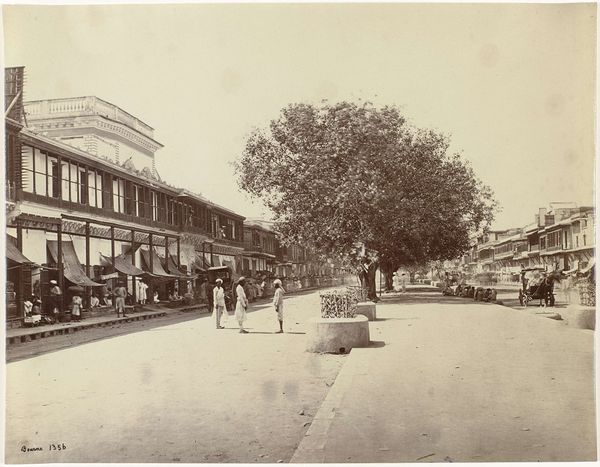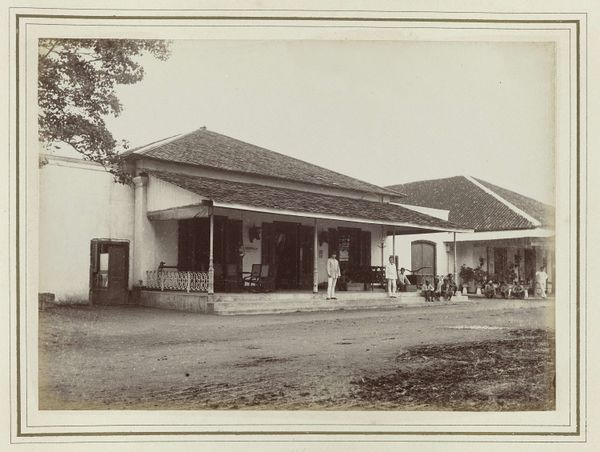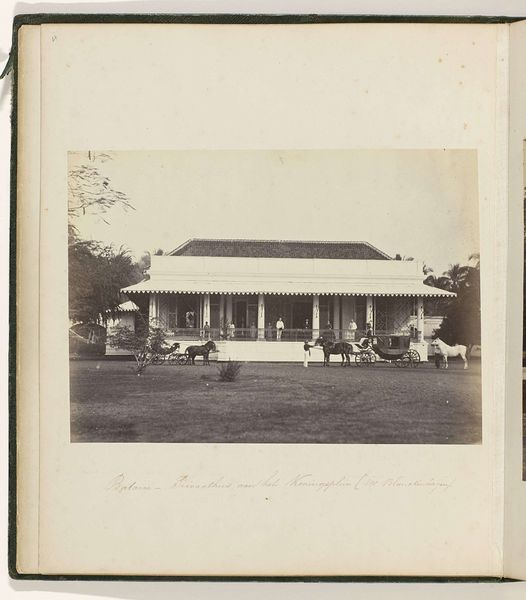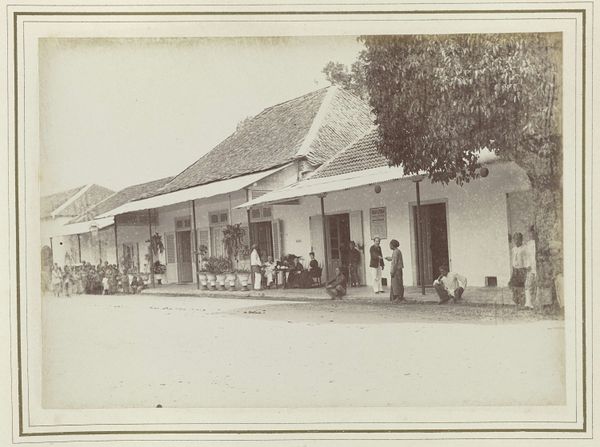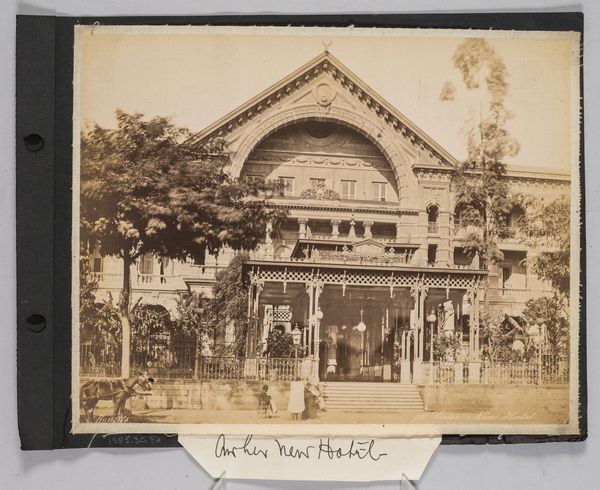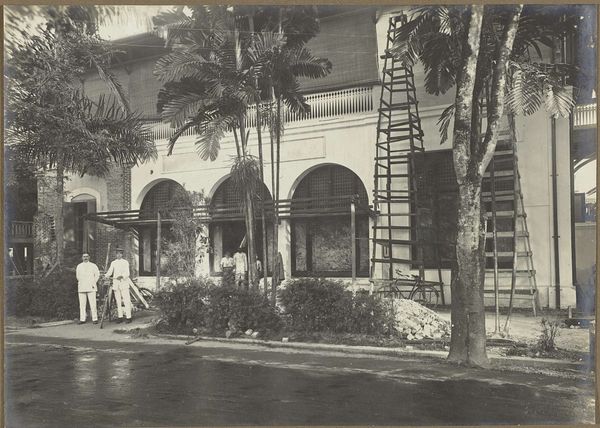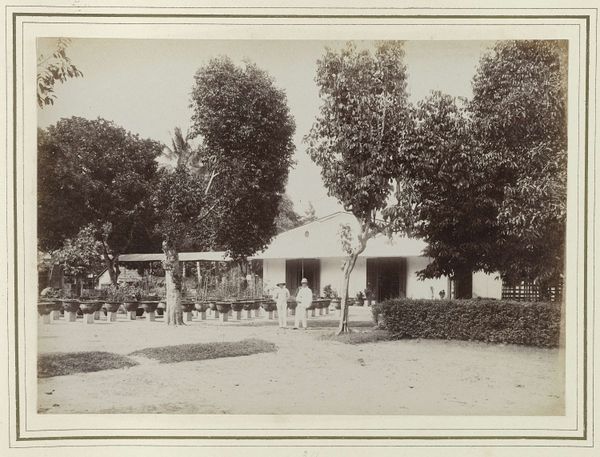
photography, albumen-print
#
landscape
#
photography
#
orientalism
#
19th century
#
cityscape
#
albumen-print
Dimensions: height 212 mm, width 270 mm, height 468 mm, width 558 mm
Copyright: Rijks Museum: Open Domain
Curator: I’m immediately struck by the atmosphere. There's a sense of stillness and light despite all the intricate details. Editor: Indeed. We're looking at Jean Pascal Sébah's "New Hotel te Caïro", taken between 1888 and 1895. It's an albumen print, a very common photographic medium back then. Notice how he meticulously captures the hotel's façade. Curator: Yes, and the composition is quite formal, almost staged. The building is centered, creating symmetry, which gives the image a certain monumentality. Yet, the soft sepia tones create an alluring visual softness. Editor: That "softness" comes at the expense of sharpness. Look closer and one notices the exposure isn't even across the frame. This albumen print probably had to be extensively re-touched; a by-product of Sébah’s working process within a very specific time. Curator: Regardless, it does lead one to contemplate Sébah's positioning of Western architectural grandeur in an Eastern locale. How interesting he chose this structure in Cairo to explore Orientalism and modernity. Editor: I find it's less about "exploring" and more about profiting from a trend, since Orientalist photographers in the 19th century used local labor in places like Cairo to make exotic pictures for the tourist and art market. Look closely and the human subjects look like set-dressings. Curator: That could also be argued, and, of course, it brings us to larger discussions around photographic objectivity, the framing of the “Orient”, and what aspects of it where perceived as palatable by Western audiences… Editor: Exactly, how these "views" of the Orient reinforced a very one-sided vision of class, labor, and consumption for Sébah's intended consumer. The photograph might suggest "art", but is inherently a commercial object. Curator: Food for thought. Sébah's arrangement and tonal balance elicit questions about how he framed—quite literally—a moment of intercultural encounter. Editor: Yes, and the labour involved in its production shaped the meaning behind this object and how it participates in these exotic fantasies.
Comments
No comments
Be the first to comment and join the conversation on the ultimate creative platform.
